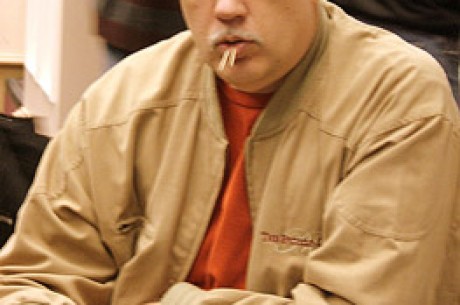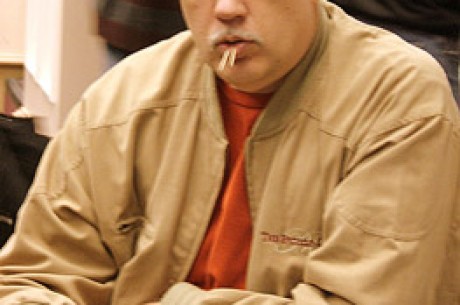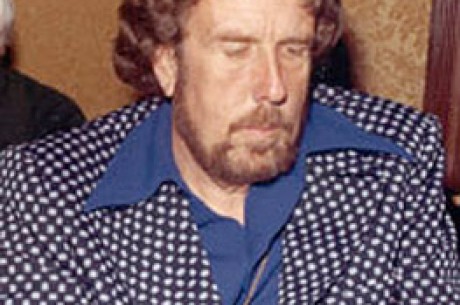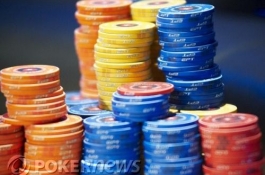Inside the Poker Tour (15) - From the WSOP
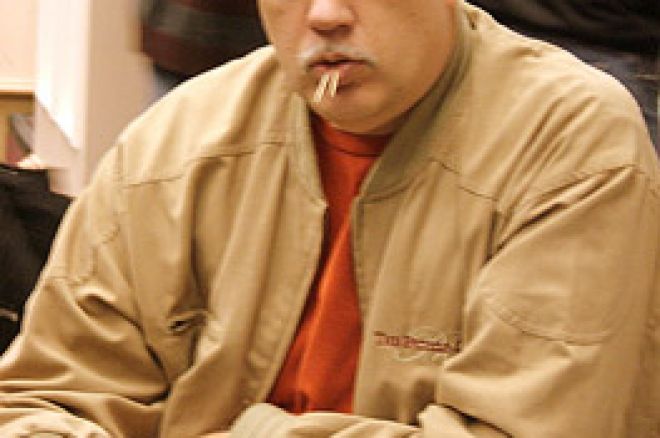
To continue my discussion of how long it is acceptable to wait before acting with the best possible hand I will mention a hand that I was involved in that is bad, but not quite as bad as the one talked about in the previous column. At the 2003 WSOP I was the chip leader in the 5000 buy-in no-limit holdem tournament with about 48 players left with about 55,000 in chips and second place in chips having only about 28,000 when the following hand came up. Now I may not have every detail exactly right but the essential nature of what happened relative to hands, chips, and the positions of players is correct.
We were playing nine handed at 300-600 blinds with an ante of 75. The under the gun player limped from a stack of about 4500, the next player limped from a stack of 11,000, the next player limped from a stack of 23,000, and two more players limped from stacks of about 18,000, the little blind called and I looked down to happily find KK in the big blind. I calculated the pot to have more than 4800 in it and I raised 5000. The raise is one which claims the pot and anyone contesting it will likely have to risk all their chips. It is a reasonable raise but quite large for these blinds and may indicate a wide range of hands as with 55,000 in front of me I can take some risks and represent a big hand without having one.
The first two players pass and I imagine that I am home free, although someone with a hand like AQ suited may call me and get lucky at some point in the hand. In big-bet holdem it is not unusual for one of the first two players to limp in with AA, but the only player I ever saw limp in third with Aces in big-bet was in the eighties when I played a cash game in Reno with a young guy named Phil Hellmuth. I have told the story of this hand many times to illustrate how badly one can play AA and perhaps we will get to it another time... In his defense he was in his early twenties and surely not as arrogant as he later became.
So this player, not famous, but not unknown either, goes into a very long think. Finally someone else at the table calls for the clock. The clock arrives and he raises me 5000 more (leaving himself a little less than 13,000 in chips). I happily move all-in, sure that he has QQ or JJ and then almost fall out of my chair when he turns over AA. It comes 10 high and I lose the hand, and in fact, do not even make the money(!) although I am still well above average after the hand.
This one is more understandable and although not as egregious as the Greenstein-Trumper hand it is still plenty bad enough. At some point bad acting becomes an insult but it is not easy to decide at exactly what point that becomes true.
Okay we will move on to some comments relating to strategy.
KJ suited is a hand that has a lot of value against weak and wild opponents in limit holdem, but is a death trap against tight or good opponents. It amazed me that a recent column in a national publication talked about the various ways that one could lose less with the hand after you began by calling a raise before the flop with the hand against a tough opponent! There is most certainly a way to save those betsdon't play the hand in the first place. This is a hand that will require good judgment after the flop. If you doubt your own ability to determine where you are, or lack the experience to be comfortable making this judgment, do not put yourself in this position. It is simpleyou do not have to play the hand! There are three ways to play the hand 1) behind weakness, rather the player[s] ahead have limped in or raised unbelievably 2) first in with a raise, and 3) as a volume hand (where ideally all the other players take the flop for one bet).
In no-limit holdem the vulnerability of many hands that have value in limit holdem are brought to light. KJ suited is just one of many hands with which you are more likely to lose a big pot than win one. Some of the other hands that play poorly in no-limit are KQ (suited or not), AJ (suited or not), and AQ off-suit behind a raise. There are two reasons for this1) the potential matchups versus an opponent that shows strength in a pot are usually not favorable, and 2) the odds you receive in a drawing game like limit holdem are usually not there. We will illustrate this further.
The first time you turn over AQ and are against AK, AA, KK, QQ, or even JJ, 10-10, or 9-9 you will feel your hopes reduced to prayers rather quickly. Unless the holdem gods are with you your days are likely numbered. This is even more likely if you hold AJ. Understanding at what stage of the tournament it is acceptable to play such hands is also important as you read about these very same hands at critical moments.
At least with AQ off-suit or AJ suited you are likely to forgive yourself but the first time you turn over KQ off-suit or KJ suited and are against AA, KK, QQ, JJ, AK, or AQ you will feel not only vulnerable, but stupid. This is not a good feeling.
Secondly the math of poker pots gives immediate direction to the correctness of any call, which is obvious when you stop and think about it. As an example, in limit holdem the pot may have 210 in it and when you bet or call 30 more on the flop you are often getting good odds to draw while trying to complete a hand, but in no-limit holdem you might be facing a bet of 210 or more in the same situation, and now getting 2 to 1 instead of 7 to 1 many draws are no longer sensible. Furthermore this extends to the next street so that while you may continue to get proper odds on your initial decision in your limit game it may become way too expensive to continue to draw in the no-limit game. In many situations in no-limit your draw is for only one more card, not for all remaining streets, this quickly changes the true odds for all drawing hands.
Until next time play good...and get lucky!
Ed Note: Poker Stars have our highest rated tournaments, find out why

